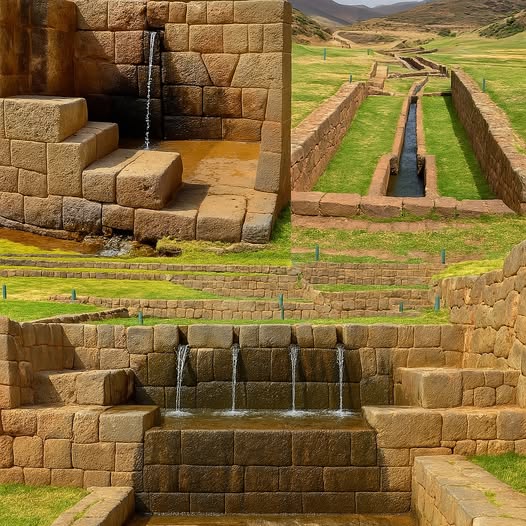A Water System That Stood the Test of Time
The aqueduct at Machu Picchu stands as a stunning testament to the brilliance of ancient engineering. Built around 1200 BC, this advanced water system reflects the deep understanding the early Andean people had of their natural environment—and their remarkable ability to design practical, lasting solutions to everyday challenges.

Designed to carry fresh water from mountain springs to various parts of the city—including homes, farms, and ceremonial sites—the aqueduct is more than just a feat of construction. It’s a symbol of a civilization that lived in harmony with nature, using minimal tools and maximum ingenuity.
Even more impressive? Parts of the aqueduct still function today, over 3,000 years later.
Three Main Channels, One Unified Vision
Machu Picchu’s water system includes three main aqueducts, each carefully engineered to handle the region’s steep terrain and intense rainfall. Instead of fighting against nature, the builders worked with it:
- Stone-lined channels directed water with precision
- Carved paths slowed water flow to prevent erosion
- Smart layouts ensured that rainwater and spring water were distributed without causing floods
This wasn’t just about convenience—it was essential for supporting daily life, sustaining agriculture, and maintaining religious practices in one of the most rugged environments in the world.
Supporting Life on the Mountain
Water from the aqueducts didn’t just keep the city running; it also fed the terraced farms that clung to Machu Picchu’s steep slopes. These terraces were a key to the Inca’s survival, allowing them to grow crops at high altitudes with limited soil and water.
By supplying water evenly across the terraces, the aqueduct helped the city remain self-sufficient, efficient, and resilient. This is a perfect example of sustainable design centuries ahead of its time.
🛠️ Built with Simplicity, Enduring with Purpose
Perhaps the most amazing part of the Machu Picchu aqueduct is how it was built—with simple tools and local materials, yet with incredible precision. There were no computers, modern machines, or advanced measuring tools—just knowledge, skill, and respect for the land.
The result? A water system that still flows, offering modern-day visitors a living glimpse into the brilliance of ancient innovation.
🌄 Final Thought
The aqueduct of Machu Picchu isn’t just an archaeological wonder—it’s a reminder of what’s possible when humans build with nature instead of against it. In a world searching for sustainable solutions, the wisdom of the past has never felt more relevant.
Leave a Reply